Take a look at these 12 best national parks in Nepal that are rich in bio-diversity. These top 12 national parks of Nepal protect endangered wildlife and their natural habitat.
Nepal is a small landlocked territory that shelters a large amount of forest land, lakes, and high mountains.
These forest land, mountains, and lakes contribute to wonderful ecosystems with various climates.
A lot of national parks have been conserving the essence of these natural beauties in different corners of Nepal.
These national parks are dedicated to preserving and sustaining the blessing of mother nature that is hardly found in any other place than Nepal.
List of National Parks in Nepal
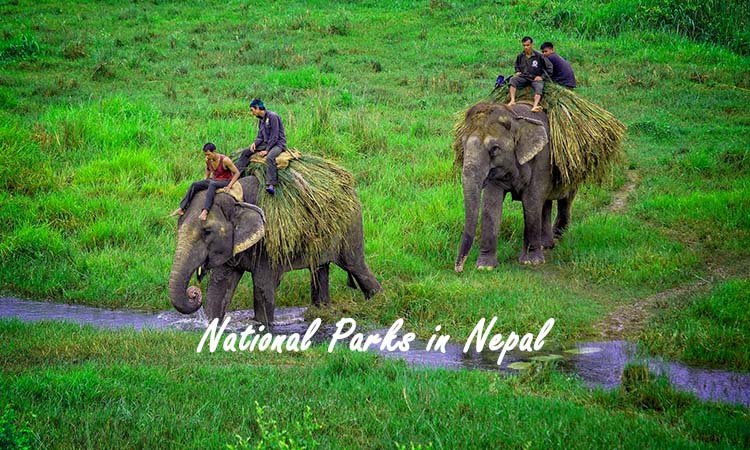
The national parks of Nepal include some unique species of wildlife, distinct flora, and fauna, some of the world’s high peaks, beautiful waterfalls, green hills, and precious monuments.
Also, you will discover lengthy hiking trails that make your journey enthralling. These national parks have undoubtedly everything you want to explore while traveling in Nepal.
1. Chitwan National Park
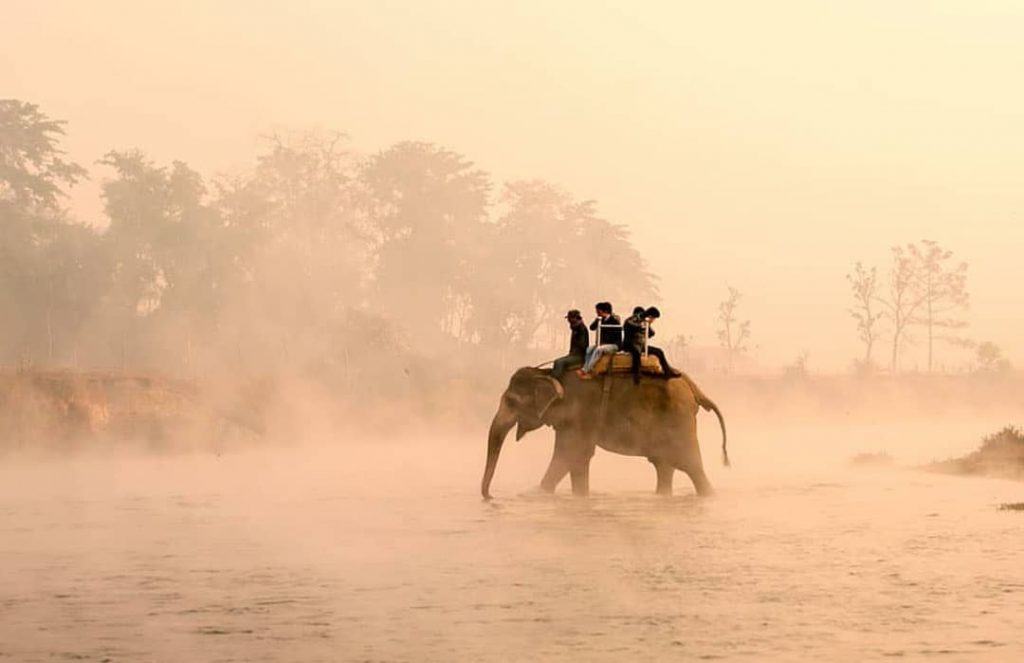
Out of 12 national parks, Chitwan National Park is the most popular and most visited national park in Nepal. Established in 1973, Chitwan National Park is regarded as Nepal’s first national park.
Later, in 1984, it was declared a UNESCO World Heritage site, which helped it become a renowned national park of Nepal. The Chitwan National Park has been a major part of Nepal’s tourism ever since.
Located in the central Terai of Nepal, Chitwan National Park is best known for the Chitwan jungle safari. Travelers from all around the world visit Chitwan National Park to spy on one-horned rhinos and encounter fierce Bengal tigers.
It is said that the late King Mahendra, an avid hunter, used to go hunting in the jungle of Chitwan National Park before it was declared a national park. Similarly, the late King Birendra is also said to have had his first hunt in the same forest.
Covering an area of 952.63 sq. km, it is divided by the Narayani-Rapti River from the human settlement. These villages have a thick settlement of Tharu communities.
During your trip to Chitwan National Park, you can explore the Tharu culture and lifestyle with a closer glimpse. Tharu people are welcoming and kind in nature.
Homestay is also available where the local family allows you to have a first-hand experience of their culture.
Enjoy their traditional dance while savoring their distinct cuisines. You can even try their traditional dress, which is quite unique from any other culture.
While touring the Chitwan National Park, you can have two options. You can either have an elephant ride or a jeep ride across the jungle.
The jungle safari elephant ride is popular among visitors who like to take a tour of the jungle with less noise and watch the animals from a height.
Likewise, the jeep ride is usually picked by those who want to cover more area in less time. Besides, riding the elephant, you can also bathe the elephant and have an elephant shower as a fun activity.
It is said that Chitwan National Park is a natural habitat for around 50+ mammal species, over 55 amphibians and reptiles, and 544+ birds.
Rare animals like the Royal Bengal tiger, One-horned rhinos, crocodiles, alligators, deer, hippopotamus, Four-horned antelope, Pangolins, etc are sheltered at this national park.
Similarly, visiting Chitwan National Park is suitable for bird-watching. October to March is considered not only the best time to visit Chitwan but also the best time for bird-watching.
The weather is neither too hot nor cold making it easy to travel in the Terai region. Travelers are also fond of the beautiful sunset view that is observable from Chitwan National Park.
Chitwan National Park’s entry fee varies according to nationality. You need to purchase a national park permit for each person entering the national park.
For foreigners, the entry fee is NRs. 2000 per person. For SAARC countries, the entry cost is NRs. 1000 per head. Similarly, for Nepalese, the entry charge is NRs. 150 for each person. The cost of an elephant or jeep ride, and canyoning is an additional charge and not included in the entry fee.
2. Khaptad National Park
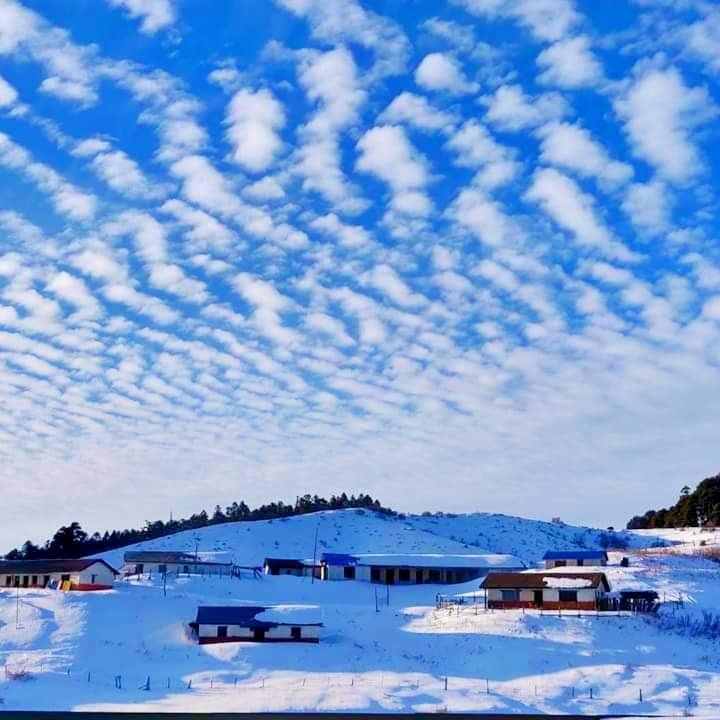
Khaptad National Park, a prestigious site in Far West Nepal, was established in 1984. Located in the Doti district of Sudurpaschim province, Khaptad National Park is a spectacular tourist destination.
Occupying a land of around 225 sq. km. from Bajhang, Bajura, and Accham to Doti, Khaptad National Park resides at an elevation of 1,400 m to 3,300 m. Khaptad National Park is the only national park in the isolated area of western Nepal.
The national park is named after a saint called Khaptad Baba, who is said to have meditated at that place. A statue of Khaptad Baba is also present at the Khaptad National Park premises built as a tribute to Khaptad Baba.
In the protected area of Khaptad National Park, there are around 23 mammal species, 287+ bird species, over 23 reptile species, and 567 species of flora. Regarded by visitors as the hidden paradise of Nepal, Khaptad National Park is known for sheltering some unique and diverse wild animals such as yellow-throated marten, Himalayan black bear, leopard, goral, deer, etc.
Visiting Khaptad National Park is also suitable for bird-watching as it habituates species of Himalayan Monal, peregrine falcon, white-rumped vultures, and more. Khaptad National Park is also home to a few notable lakes such as Nag Dhunga, Khaptad Daha, and Upper Tribeni.
If you want to choose the best time to visit Khaptad National Park, then the Spring and Autumn seasons are the best ones. Visit during March to May or October to November for a better traveling experience as the weather is pleasant for trekking, bird-watching, observing mountains, and so on. It is also the time when the forest is stuffed with blooming rhododendrons.
To avoid slippery and muddy trails, skip the monsoon season (June to September). Similarly, during winter (December to February), the weather becomes too chilly and windy at such an elevation. It will be difficult to walk for 6-7 hours every day during monsoon and winter.
Travelers require a permit to enter Khaptad National Park. You can get an entry permit from a counter at the entry point of Khaptad National Park. If you prefer, you can acquire the entry permit from the Tourist Service Center, Bhrikutimandap too.
The entry fee for a foreigner is NRs. 1,500, for SAARC nationals, it is NRs. 500 and for Nepalese, it costs NRs. 100.
Similarly, the documentary/ filming fee should also be paid if you are going to take cameras and drones with you inside the Khaptad National Park. It costs an additional USD 1,500 for foreigners and NRs. 50,000 for SAARC nationalities and NRs. 10,000 for Nepalese.
Though transportation to Khaptad is easily accessible, the journey to arrive at the national park is quite strenuous. You can take a public bus from Kathmandu’s new bus park to Attariya Chowk, Kailali. Then, take a 9-hour drive from Attariya Chowk to Silgadhi Bazaar.
Alternatively, you can either take a flight to Dipayal and have a three-day walk, fly to Achham or Bajhang and have a two-day walk, or fly to Bajura followed by a four-day walk. The trip to Khaptad National Park would require at least 1 week.
Khaptad National Park also holds religious importance due to the presence of the Triveni temple. The locals celebrate the Ganga Dushera festival with great joy. Due to various reasons, Khaptad National Park has a great possibility for tourism.
3. Bardia National Park
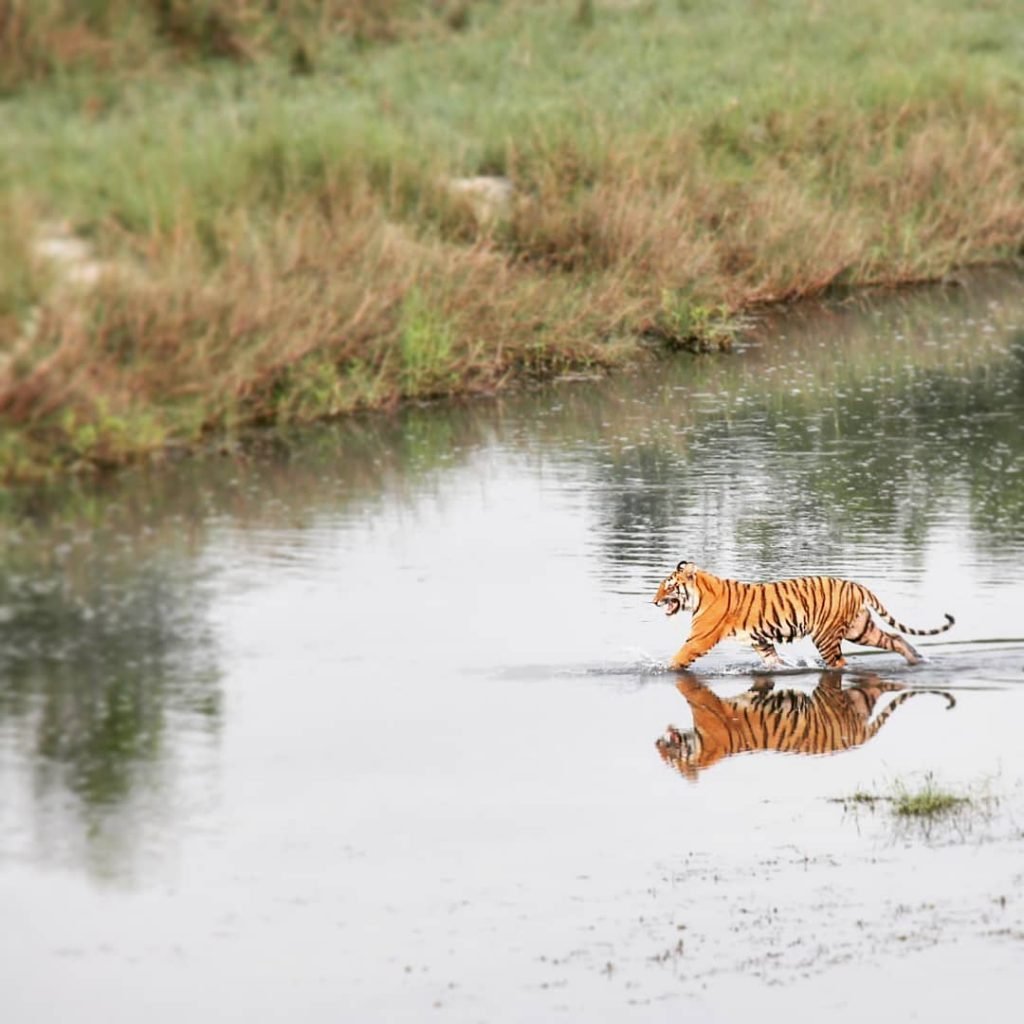
Bardia National Park, the largest national park in the Terai region, was established in 1988. It covers an area of 968 sq. km. and is adjacent to the Karnali River from the east side.
Bardia National Park integrates with Banke National Park to form a coherent protected area called Tiger Conservation Unit (TCU). This Bardia-Banke protected area extends to over 1,437 sq. km.
The Karnali River and the Babai River which bisects the national park from the Bardia district, elevate the beauty of the Bardia National Park. Wild animals and birds are occasionally seen bathing in the river.
On the north side, the spectacular view of the Siwalik Hills impresses the visitors a lot. Bardia National Park habituates various wild animals, birds, flora and fauna, vegetation, trees, reptiles, amphibians, and so on.
About 70% of the park is occupied by a forest, which shows records of 839 distinct species of flora, about 125 species of fish, 25 reptiles and amphibian species, 55 mammals, and 438 bird species. You can explore the wilderness of the forest during a jungle safari.
When visitors arrive in Bardia, the Tharu community welcomes them with garlands and manifests their warm hospitality. Tharu people are known for their humbleness and kind heart.
Tharu people with open arms welcome visitors to their Tharu community homestay, where visitors can explore the Tharu culture with a closer glimpse.
UK’s Prince Harry has also visited Bardia National Park and explored the Tharu culture. He stayed at the home of a Tharu, where he experienced the local Tharu lifestyle.
During his visit, Prince Harry was intrigued by the Tharu culture and he went on to encourage the Tharu community to protect their valuable culture.
Women and men donning Tharu cultural attire entertain the visitors with their traditional dance in traditional folk songs. They usually perform their cultural dance such as Chhokra naach, Laathi naach, Sakhiya naach, and Jhumra naach during special festivals.
Apart from the abundance of nature here, Bardia has many more attractions that visitors can explore such as the elephant breeding center, crocodile breeding center, Tharu cultural museum, river rafting, etc.
The best time to visit Bardia National Park is from mid-September to mid-December and then from February to May. Similarly, Bird watching is best suitable during February/ March when several migratory birds shift to Bardia National Park.
Expect to witness birds like Bengal florican, bar-headed geese, white-rumped vulture, peafowl, sarus crane, Lesser florican, golden-headed cisticola, Grey-crowned Prinia, jungle Prinia, pale-footed bush warbler, aberrant bush warbler, etc.
Similarly, rhinos, tigers, elephants, deer, and other endangered animals are major attractions here.
Visiting Bardia National Park is not recommended during winter as the temperature drops drastically, and the snowfall will make the journey difficult. Similarly, during monsoon, the rainfall makes the trails muddy and slippery making it difficult to walk and encounter animals in natural surroundings.
Visitors require a permit to enter Bardia National Park. They charge NRs. 1500 for foreigners, NRs. 750 for SAARC Nationalities and NRs.100 for Nepalese.
Similarly, the documentary/filming fee tends to be around USD1500 for foreigners, NRs.50,000 for SAARC Nationalities, NRs.10000 for Nepalese, and an additional 25% for drone filming.
4. Sagarmatha National Park
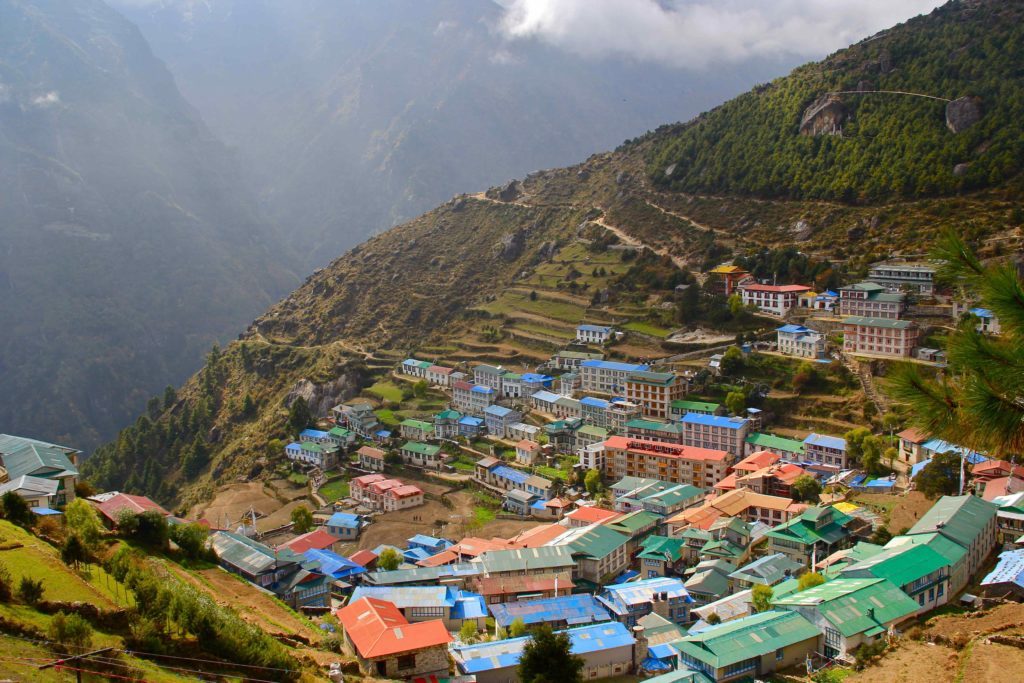
Not only Sagarmatha Base Camp, but Sagarmatha National Park is also a major tourist destination in Northeast Nepal. Located in the Solukhumbu district of the Khumbu region, Sagarmatha National Park covers an area of 1,148 sq. km.
Sagarmatha National Park came into effect in 1976, and within 3 years of its establishment, it became the first national park to be declared a World Heritage site.
Residing at the foot of majestic Mount Everest, Sagarmatha National Park sits at an elevation of 2,845 m to 8,848 m. It means you get to witness a spectacular view of Mount Everest in the vicinity as well as Mount Lhotse, Mount Nuptse, and Mount Cho Oyo.
The Sagarmatha National Park further extends to Makalu Barun National Park in the east, Gauri Shankar Conservation Area in the west, and Qomolangma Nature Reserve in the Tibetan Autonomous Region in the north. This sacred Himalayan landscape is around 135 km away from Kathmandu.
The best time to visit Sagarmatha National Park is around October to November and March to May. when the weather is clear. The forest is abundant with rhododendrons, blue pines, juniper, and many distinct vegetations.
It is better to avoid the monsoon season (June to September) as the heavy rainfall makes it difficult for hiking and camping. Similarly, the winter season (December to February) causes snowfall so it becomes extremely cold.
You can take a direct flight from Kathmandu to Lukla and trek up to Sagarmatha National Park. It takes around 45 minutes to fly to Lukla.
While you visit Sagarmatha National Park, also explore the authentic Sherpa culture by visiting the nearest Chukung and Thame villages.
The thick settlement of the Sherpa community is rich in culture and warm hospitality. If you go for a homestay, you can get to experience their lifestyle and learn about their culture and traditions in their own words.
Sagarmatha National Park shelters about 208 species of birds The national park also protects endangered animals such as the Red pandas, rhinos, Himalayan Thar, Himalayan serow, and musk deer.
The snow leopard is found at an elevation above 3,500 m, which is rare to see. If you are lucky, you may encounter a snow leopard in the mountains.
The visitors require an entry permit for the excursion to Sagarmatha National Park. For foreigners, the entry fee is USD 30, NRs. 1,500 for SAARC nationals, and NRs. 150 for Nepalese plus the 13% VAT.
5. Langtang National Park

Not so far away from Kathmandu, Langtang National Park is a fascinating place located in space spreading in Nuwakot, Rasuwa, and Sindupalchowk districts. It was established in 1976 and covers an area of 1,710 sq. km.
Langtang National Park has been a major attraction among trekkers due to the presence of the sacred Gosainkunda Lake. It is a holy lake that carries religious significance among pilgrims.
Other than Gosainkunda, several other small lakes are visually spectacular. The Gosainkunda area is also a wetland of international importance under the Ramsar conservation program.
This national park is abundant with 14 types of vegetation, 46 species of mammals such as Himalayan tahr, wild boar, grey Himalayan brown bear, langur monkey, 70 species of butterflies, 345 species of birds such as Impeyan pheasant, snow partridge, ibis bill, crimson horned pheasant, and around 1043 species of vascular.
The visitors can also observe a majestic view of some high peaks such as Langtang Lirung, Jugal Himal, Chimse Ridge, and Dorje Lakpa Peak. Similarly, the west side of the Langtang Valley has the serene Langtang River flowing.
The trip to Langtang National Park is time-consuming and slightly hassling so, you should choose a suitable season to visit the national park. The Langtang weather is clear in the Spring season from September to May, during which the forest is green and flowers are blooming.
Similarly, during autumn, rhododendrons of various colors cover the forest. The wild animals and birds are also visible as they stroll around during suitable weather.
Avoid the winter season (mid-December to February) because the heavy snowfall tends to block the trails and it’s too chilly to walk outside.
Pilgrims visit the Gosainkunda during special festivals such as Janai Purnima. Gosainkunda Lake holds religious significance as it is said that Lord Shiva is resting beneath the lake. There is also a popular saying that bathing in the Gosainkunda Lake removes your diseases and clears your sins.
Visitors require permits to enter the Langtang National Park. You can buy the entry permit at the entrance of the national park. For foreigners, the entry ticket costs NRs. 3000, NRs. 1500 for SAARC nationals, and NRs. 100 for Nepalese. Entry is free for children below 10 years. They may charge extra for the cameras.
It may take a week to complete your Langtang National Park trip. You should be capable of walking on rough trails uphill. Teahouses and simple lodging facilities are available along the routes from Sundarijal and Dhunche to Langtang National Park.
6. Shey Phoksundo National Park
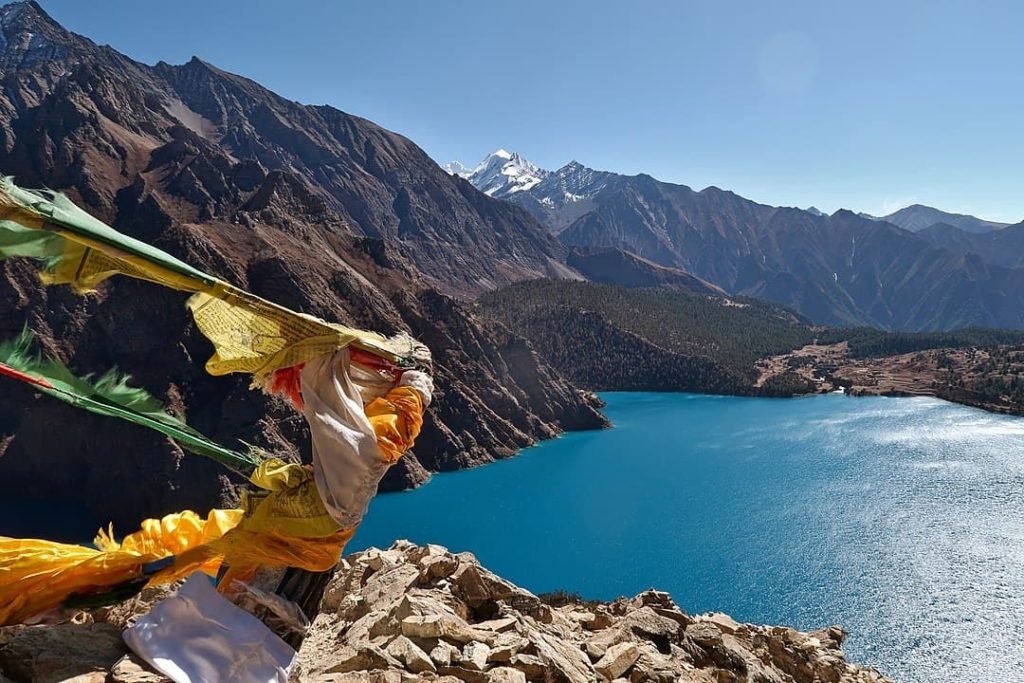
Located in the midst of the trans-Himalayan ecosystem of the mid-western region, Shey Phoksundo National Park is a spectacular national park established in 1984. This serene national park covers an area of 3,555 sq. km. and resides at an altitude of 2,130m to 6,988m.
Shey Phoksundo National Park encircles various wild animals such as leopard, ghoral, weasel, musk deer, wild dog, marmot, Himalayan tahr, Himalayan black bear, and fox.
Similarly, the national parks include around six species of reptiles, and over 200 bird species including Tibetan partridge, wood snipe, raven, white-throated tit, yellow-throated marten, impeyan pheasant, cheer pheasant, chough, Tibetan twit, Himalayan griffon, etc, and over 29 species of butterflies.
The best time to visit Shey Phoksundo National Park is during the Spring season and Autumn seasons. During the Spring season (March to May), the weather is favorable for trekking, bird watching, and exploring vegetation as well as the wild animals who come out for fresh air from their niche.
The weather is also suitable for mountain viewing. The park is said to include around 31 snowcapped mountains, including Dhaulagiri Mountain, and the tallest and most prominent peak is Kanjiroba (6,883 m).
One of the major attractions of Shey Phoksundo National Park is Phoksundo Lake, a graceful waterfall, and major rivers. Phoksundo Lake is situated at an elevation of 3,660 m.
The turquoise-colored Phoksundo Lake ends in the highest waterfall. The park also includes the Khung, Nmajung, and Panjang Rivers.
Try to avoid the winter season as the place faces heavy snowfall from late November to February. Most of the animals do not come out during winter in the cold.
Also, it becomes difficult to walk and complete the trip in winter. Similarly, the heavy rainfall of the monsoon is also not that suitable for visiting Shey Phoksundo National Park. The trail becomes slippery and risky.
To arrive at Shey Phoksundo National Park, you can take a flight from Kathmandu to Nepalgunj and then a 20-minute flight from Nepalgunj to Dolpa’s Juphal Airport.
Shey Phoksundo National Park is about 315 km from Kathmandu, located in the Dolpa district. It is a great place to escape into nature.
There are limited teahouses near Phoksundo Lake. They offer delicious meals but not many options to choose from.
While you visit Shey Phoksundo National Park, grab a chance to explore magnificent Dho village (one of the highest settlements in the world), and Rhigmo village.
Visitors should acquire permits to enter the Shey Phoksundo National Park. The entry fee for foreigners is NRs. 3000, for SAARC nationalities, it is NRs. 1500, and for Nepalese, the entry cost is NRs. 100. They may charge extra if you want to carry a camera inside to film.
7. Shuklaphanta National Park
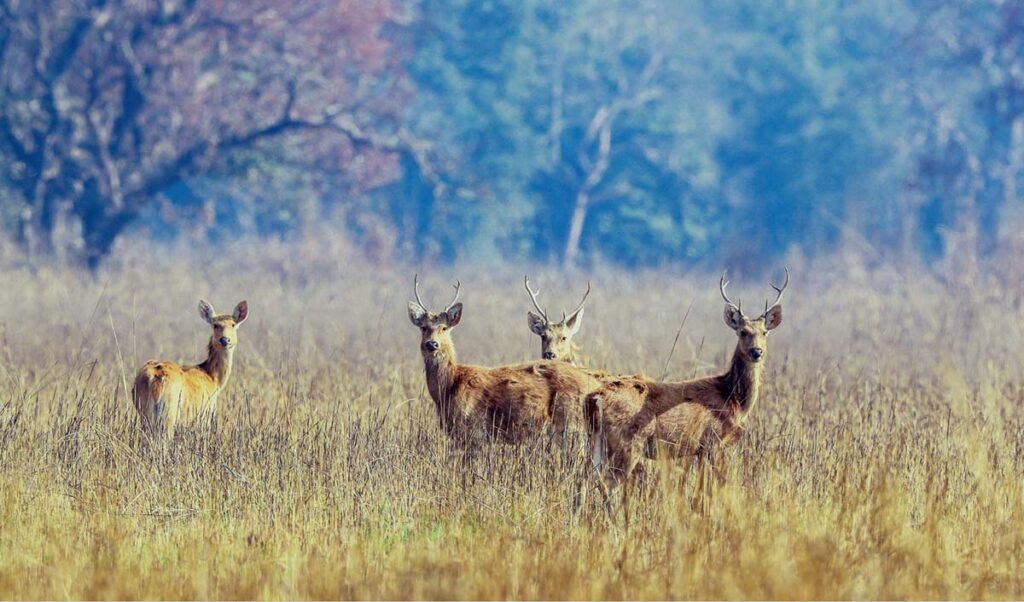
Shuklaphanta National Park is a renowned national park established in 1984. It is located in the northwest part of Nepal.
With an area of 305 sq. km, Suklaphanta National Park is one of the best trekking destinations in Nepal. Situated in Sudurpaschim province, Shuklaphanta National Park sits at an elevation of 174 m to 1,386 m.
Shuklaphanta National Park is located 720 km far from Kathmandu. Around 4 to 6 days are enough for a Shuklaphanta National Park tour. Take a flight from Kathmandu to Dhangadhi and drive to Kanchanpur.
The national park is bounded by the Mahakali River on the west and south side. Before it used to be a national park, Shuklaphanta National Park was a significant hunting area among Royal families. In 1969, it was declared a Royal Hunting Reserve.
With an area of 155 sq. km, the area was gazetted as Royal Sukla Phanta Wildlife Reserve in 1973. Later, it was extended to its present size in the late 1980s.
The Shuklaphanta National Park is a blend of open grassland, forests, riverbeds, and tropical wetlands, which makes it favorable for visitors to have an enthralling exploration.
The national park includes over 700 species of flora, over 423 bird species, 46+ mammal species, around 28 species of fish, and about 12 species of reptiles and amphibians.
Another tourist attraction at Shuklaphanta National Park is the Rani Tal (Queen Lake). It is a serene lake that exhibits a calming vibe. You can enjoy boating here and feed the ducks too.
If you wish to encounter wild animals like the Bengal tiger, hog deer, swamp deer, Indian leopard, Indian python, one-horned rhino, etc, choose the best time of the year for your trip.
Any time of the year is the best time to visit Shuklaphanta National Park, but for a better experience, embark on this profound journey either during the Spring season or Autumn season.
Visitors should acquire permits to enter the Shuklaphanta National Park. The entry fee for foreigners is NRs. 1,500, for SAARC nationalities, it is NRs. 700, and for Nepalese, the entry cost is NRs. 100. Similarly, they may charge extra for filming documentaries.
For the jungle safari, you can either opt for a jeep tour or enjoy an elephant back ride. For bird watching, the spring season (March to May) and Autumn season (September to November) are better as the diverse bird species from various corners of the world migrate here.
Also, utilize the Shuklaphanta National Park visit to explore the Tharu culture. Experience their heartwarming hospitality, and their cultural dance will reduce your fatigue. Explore their centuries-old culture while you also savor some authentic Tharu food.
8. Banke National Park
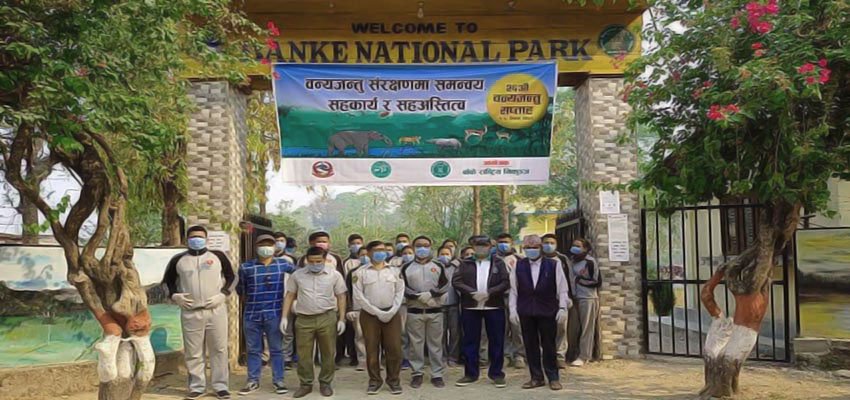
Banke National Park (BaNP) is the youngest national park in Nepal which was established in 2010. It was created by a government’s commitment to protecting the endangered tiger species.
Banke National Park covers an area of 550 sq. km. which extends to Bardia National Park to the west, Suhela Wildlife Sanctuary to the south, and Shiva River to the east.
Located in the Banke district of Lumbini province, Banke National Park is a tiger-conserving implementation that also shelters diverse species of wild animals, birds, and reptiles.
The forest patrols have a continuous watch on every movement of tigers. They have also installed sensors and cameras to keep track of the tigers.
According to a 2018 survey, there are 21 royal Bengal tigers Nepal is home to around 198 tigers. In Banke National Park, 32 species of mammals, 300 bird species, 58 species of fish, 24 species of reptiles, 7 amphibians, 296 vegetation, and 124 species of plant were recorded.
Banke National Park is the best national park to encounter a royal Bengal tiger. Besides the royal Bengal tiger, you can also expect to see an Asian wild elephant, leopard cat, Chinese Pangolin, hyaena, four-horned antelope, Asiatic rock python, Golden monitor lizard, and many more.
There’s a view tower to get a panoramic view of the jungle and see wildlife living free in the open. You can also enjoy camping in the national park. It will be an enthralling experience to spend nights in tents in the national park.
You can take a flight from Kathmandu to Nepalgunj. It takes approximately an hour’s drive from Nepalgunj to arrive at Park’s head office.
Similarly, it would take around 8 hours (270 km) from Mahendranagar and 7 hours (250 km) from Dhangadi to arrive at Park’s head office via a bus ride.
Banke National Park visit in different seasons offers you a different experience. In the summer season, the weather is dry and warm.
For a better hiking experience, the Spring season is the best. Similarly, in the autumn season, the flora and fauna are in the verse of blossoming.
During winter, the temperature drops below 0 degrees, so it becomes too chilly making it difficult to wander around the forest.
You must buy entry tickets at Banke National Park’s entry gate. The entry fee for foreigners in Banke National Park is NRs. 1,500, for SAARC nationals, it is NRs. 750, and for Nepalese, the entry fee is NRs. 100.
9. Shivapuri Nagarjun National Park

A diverse national park that was established in 2002 is the Shivapuri National Park. It is extended over Kathmandu, Nuwakot, Sindhupalchowk, and Dhading with an area of 159 sq. km.
Located in the vicinity of Kathmandu, you can start your trek to Shivapuri National Park from Narayanthan. Walking across the dense forest of Shivapuri ignites an enthralling experience.
It has to be one of the best hiking destinations located near Kathmandu. Shivapuri National Park has an abundance of wildflowers to explore.
Shivapuri has been one of the main sources of drinking water for the people of Kathmandu Valley. There are several waterfalls inside the Shivapuri Nagarjun National Park.
Shivapuri Nagarjun National Park is home to several endangered species such as the Indian leopard, Golden jackal, Himalayan black bear, Indian mongoose, Indian crested porcupine, Himalayan squirrel, closed leopard, leopard cat, Indian pangolin, and many more.
The national park also houses some remarkable reptiles such as the Himalayan keelback, variegated mountain lizard, Monocled cobra, olive Oriental slender snake, etc.
Since Shivapuri Nagarjun National Park is situated in a transition zone between subtropical and temperate climates, the diverse vegetation can be seen at different altitude levels some of which are chir pine, rhododendron, wild Himalayan cherry, ring-cupped oak, etc.
Similarly, the park also lodges around 320 species of birds, 102 rare and endangered butterfly species, and 129 distinct species of mushrooms.
Visitors have encountered birds such as Hair-crested Drongo, Grey-winged Blackbird, Grey-headed Canary Flycatcher, Bar-winged Flycatchershrike, Mountain Bulbul, Himalayan Griffon, Hume’s Warbler, White-capped Redstart, and many more in the Shivapuri Nagarjun national park. So, visiting this national park is also suitable for bird-watching.
The best time to visit Shivapuri Nagarjun National Park is any time of the year. In the summer season, you can escape the scorching heat by relaxing in the green forest of Shivapuri. You can enjoy the waterfall too during summer.
Similarly, for a better hiking experience, you can also choose the Spring season. But, it is better to skip the winter season as the temperature is too low to enjoy hiking.
In the autumn season, the flora and fauna are in the verse of blossoming. So, if you want to explore more species of vegetation and birds, then the autumn season would be worth it.
To enter Shivapuri Nagarjun National Park, you can buy an entry ticket at the entrance of the national park. The entry fee for foreigners is NRs. 1000, for SAARC nationals, the entry ticket costs NRs. 600, and for Nepalese visitors, the entry fee is NRs. 100 only.
10. Makalu Barun National Park
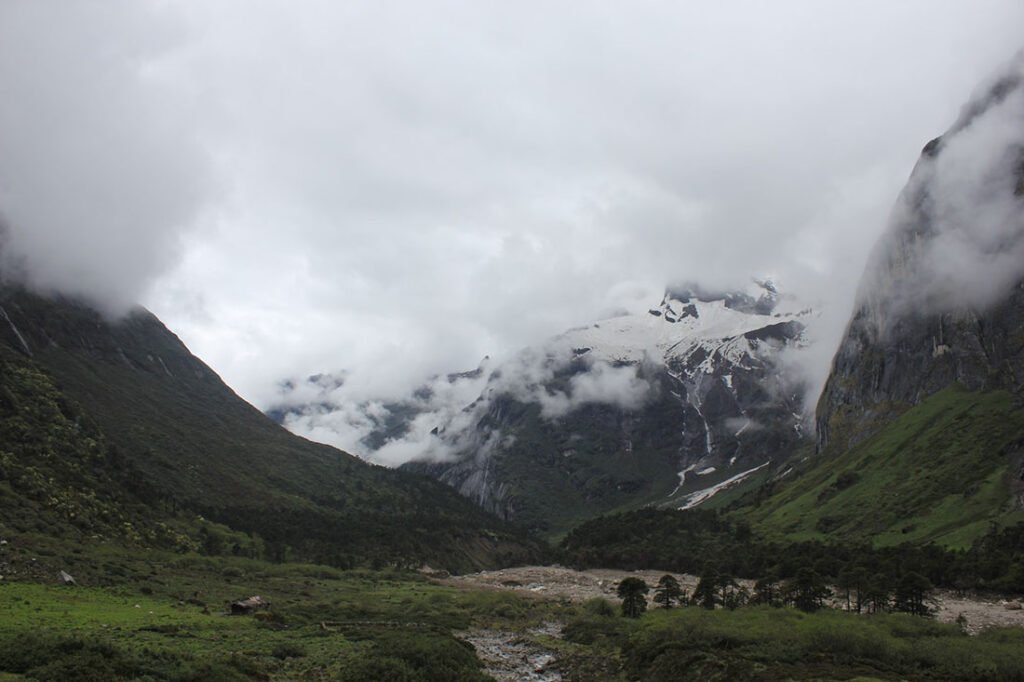
Away from the hustle and bustle of the city lies a heavenly place, which has to be nature’s blessing to Nepal. Makalu Barun National Park is a hidden gem of Eastern Nepal established in 1992.
It is a massive national park covering an area of 1,500 sq. km. that elongates from Sankhuwasabhato in the east to Solukhumbu district in the west.
It expands from an altitude of 435 m to more than 8,000 m. The world’s fifth-highest peak, Mount Makalu also lies within the territory of Makalu Barun national park.
You can expect an incredible view of Mount Makalu, Mera Peak, and Baruntse from the premises of the Makalu Barun National Park. It is spectacular a national park at an elevation of more than 8,000 meters enclosing tropical forests along with high majestic mountains.
About 33.5% of this national park’s land is covered with forest. It contains more than 3,000 species of flora and fauna and more than 300 species of wildlife.
The vegetation you can find at Makalu Barun National Park can range from juniper, and rhododendron, to aromatic herbs. The major wildlife attraction at Makalu Barun National Park is the Red panda, black bear, Himalayan wolf, red fox, golden wolf, musk deer, wild boar, snow leopard, and so on.
Makalu Barun National Park has recorded data of 88 species of mammals, 43 species of reptiles, 16 species of amphibians, 78 species of fish, 440 species of birds, and 315 butterfly species.
The best time to visit Makalu Barun National Park is any time of the year. Every climate claims distinct vegetation and wildflowers.
In the summer season, you can choose to trek to Makalu Barun National Park as the forest environment is cooling and relaxing. You can enjoy Kali Lake and Shivadhara waterfall in the national park.
In the winter season, you can enjoy the snowfall here. Get a chance to witness an astounding view of several snow-capped mountains.
In the spring season, the weather is neither too hot nor too cold. Various flora and fauna are blooming and it is suitable for bird-watching too. But it is better to skip the autumn season as the heavy rainfall makes it difficult to walk on the slippery path.
The journey to Makalu Barun National Park is a long and tedious one that may require 7 to 10 days. You have to follow a proper itinerary and a professional guide to arrive at Makalu Barun National Park.
You have to acquire permits to enter Makalu Barun National Park. For foreigners, the entry fee is NRs. 3,000. Similarly, the entry fee is NRs.1,500 for SAARC nationalities, and for Nepalese, the entry ticket costs NRs. 100.
11. Parsa National Park
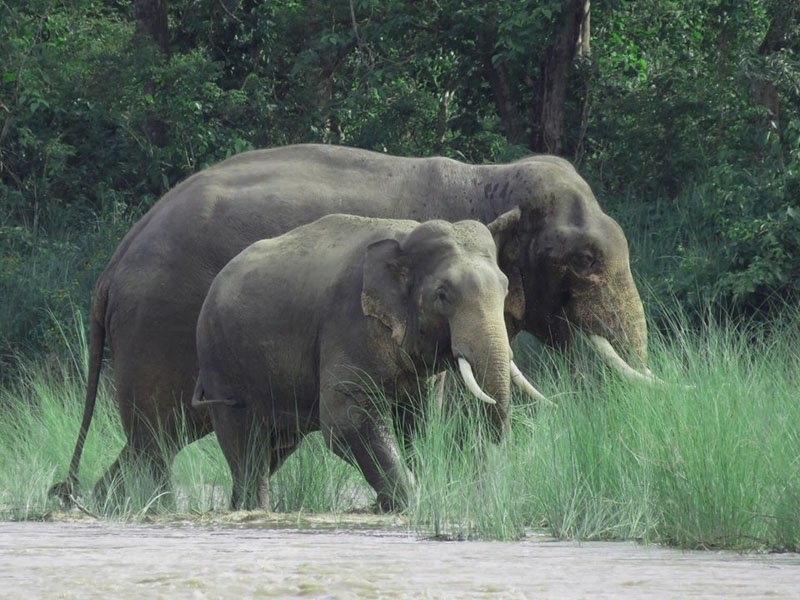
Extended in Parsa, Bara, and Makwanpur districts, Parsa National Park was first declared a wildlife reserve in 1984. Later, it was recognized as a national park in 2017 with an expanded area.
Parsa National Park is located in the southern part of Nepal with an area of 627.39 sq. km. It is adjacent to Valmiki Tiger Reserve in India in the southwest and Chitwan National Park in the west.
The Siwalik Hills and Rapti River divide Parsa National Park from human settlements. This national park is situated at an altitude ranging from 435 m to 950 m in the Siwalik hills.
Parsa National Park includes vast varieties of vegetation, wildlife, flora, and fauna. The vegetation here consists of sissoo, silk-cotton trees, chir pine, silk-cotton, Sabai grass, and many more.
The national park is protecting some endangered wildlife such as the Royal Bengal tiger, Asian elephant, Sloth bear, Leopard, Nilgai, Sambar deer, Chital, Barking deer, striped hyena, and Asian palm civet.
About 500 kinds of bird species are accessible for observation around the park, which includes some endangered birds such as the Paradise flycatcher, giant hornbill, large racquet-tailed drongo, White-breasted kingfisher, Golden-backed woodpecker, etc.
Similarly, snake species such as King cobra, python, common Karit, common cobra, banded Karit, etc along with some rare species of reptiles and amphibians are nestled at Parsa National Park.
Parsa National Park can be easily reached either via road or flight. For a road trip, headstart from Kathmandu by taking a public or private vehicle to Hetauda, and then to Birgunj. It takes around 6-7 hours to get there.
Parsa National Park is not only a wildlife conservation area but also holds significant religious importance. Several temples and shrines pay homage to Lord Shiva and Goddess Parvati.
If you think, observing wildlife is the only thing you can do at Parsa National Park, then that is not true. You can enjoy bird-watching, vegetation exploring, Jungle safari, canoe riding, elephant riding, camping, hiking, and more.
Also, use the opportunity to explore the Tharu culture at the human settlements near Parsa National Park. Home staying is the best way to get a closer glimpse of their lifestyle.
The best time to visit Parsa National Park is in the Spring and Autumn seasons. In winter (mid-November to February), the weather is not clear, and the fog interferes with bird-watching and wildlife exploring as it becomes difficult to see.
During the Spring season (March to May), the weather is pleasant and the sky is clear. During the Summer season (May to mid-August), the temperature rises exponentially and it becomes difficult to walk in the scorching sun.
Similarly, during Autumn (mid-August to mid-November), rainfall occurs, which makes the day fresh and clean afterward.
Parsa National Park’s entry fee is affordable. For foreigners, the entry fee costs NRs. 1,500, for SAARC nationals, the entry ticket costs NRs. 750, and for Nepalese, the entry ticket price is NRs. 100.
12. Rara National Park
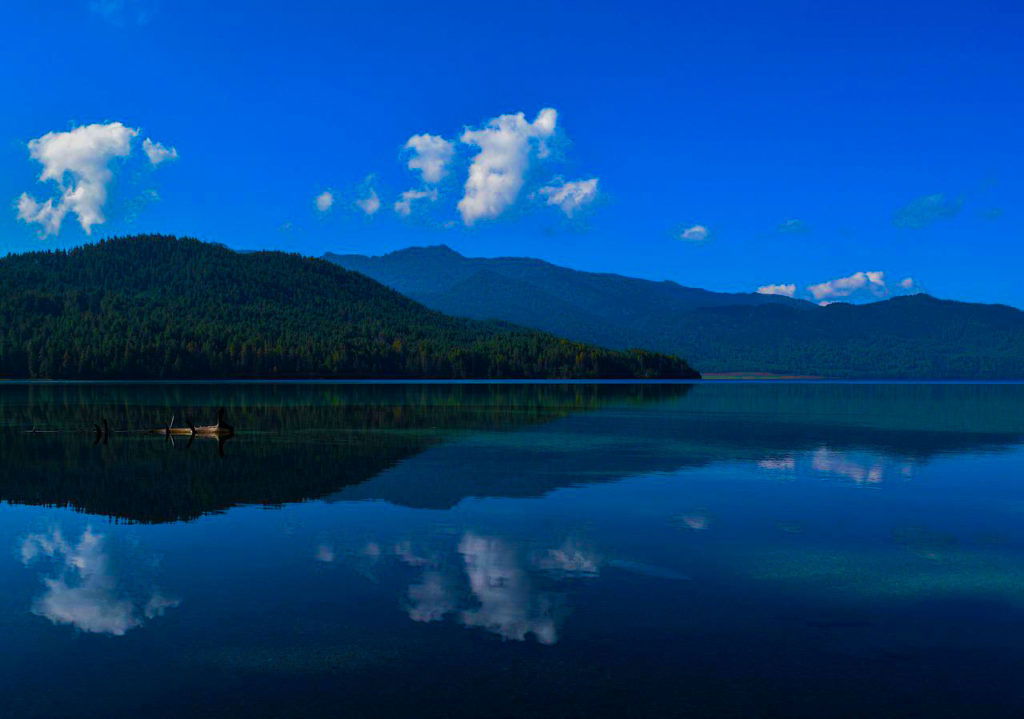
No less than a piece of heaven, Rara National Park is a paradise on earth. Renowned as the smallest national park in Nepal, Rara National Park was established in 1976.
With an area of 106 sq. km, Rara National Park extends from Mugu to the Jumla districts. The Rara national park is located at an altitude from 2800 m to 4039 m.
It shelters some rare and distinct species of vegetation, flora, fauna, and wildlife. Rara National Park shelters Nepal’s largest lake, Rara Lake yet it is the smallest national park in Nepal.
Rara National Park is considered a top destination for a cultural, tribal, and adventurous jungle safari by avid trekkers. Most of the trekkers come to visit Rara Lake and relax there.
Rara National Park also embraces some ancient temples and shrines like Chhapru Mahadev, Rara Mahadev, and Thakurnath Mahadev. And, Chhayanath, Rinmokshhya are other popular religious sites in this region.
There are around 1,070 species of flora found in the park. Explore the distinct vegetation of the Rara National Park such as rhododendrons, blue pine, brown pal, black juniper, fir, spruce, Himalayan cypress, and many more.
There are about 210 bird species with some migratory birds such as the common teal, red-crested pochard, black-necked grebe, etc. So, Rara National Park is also suitable for Bird-watching. During winter, several distinct birds migrate to Rara National Park.
Rara National Park has a record of 20 species of mammals. Expect to encounter animals like musk deer, Himalayan tahr, leopard, langur, jackal, and red panda inside the park.
You can do several fun activities at the Rara Lake premises. Visitors love boating and fishing at Rara Lake. You can also camp by the lakeside while observing high hills and a serene environment.
The Rara National Park is around 350 km far from Kathmandu. You can take a direct flight from Kathmandu to Jumla. From Jumla, you can trek up to the park for two days.
The best time to visit Rara National Park is any time of the year. But, for a better trekking experience, avoid the winter season. During winter (mid-November to February), the trails become slippery and it’s too chilly at such high elevation.
Similarly, during monsoons too, due to heavy rainfall, trekking becomes difficult and risky. The path becomes so slippery that the vehicle may slip downward.
During summer (May to mid-August), the weather is pleasant and clear. You can relax at the lakeside in the summer. The weather is also suitable for mountain viewing. The Spring season (March to May) is also preferred by visitors to explore the forests of Rara National Park.
Rara National Park’s entry fee is as follows: For foreigners, the entry fee is NRs. 3,000 per person. For, SAARC nationals, the entry fee is NRs. 1,500 per person. Similarly, the entry fee for Nepalese is NRs. 100.
National Park Entry Fee in Nepal
| Chitwan National Park | Shuklaphanta National Park |
| Langtang National Park | Banke National Park |
| Sagarmatha National Park | Koshi Tappu Wildlife Reserve |
| Rara National Park | Dhorpatan Hunting Reserve |
| Shey Phoksundo National Park | Annapurna Conservation Area |
| Khaptad National Park | Kanchanjunga Conservation Area |
| Bardia National Park | Manaslu Conservation Area |
| Makalu Barun National Park | Api Nampa Conservation Area |
| Shivapuri Nagarjun National Park | Gaurishankar Conservation Area |
| Parsa National Park | Krishnasar Conservation Area |
Here we are going to list the entry fees for National Park fees in Nepal for Nepali, SAARC nationals, and foreigners.
Note that there aren’t any fees for children below 10 years other than that please see the list. The below-listed fee is per person per entry i.e. if you want to explore listed parks again with the same tickets then it’s not possible.
| List of National Parks | Nepali | SAARC | Foreigners |
|---|---|---|---|
| Chitwan National Park | Rs. 150 | Rs. 1000 | Rs. 2000 |
| Khaptad National Park | Rs. 100 | Rs. 500 | Rs. 1500 |
| Bardia National Park | Rs. 100 | Rs. 750 | Rs. 1500 |
| Sagarmatha National Park | Rs. 100 | Rs. 1500 | Rs. 3000 |
| Langtang National Park | Rs. 100 | Rs. 1500 | Rs. 3000 |
| Shey Phoksundo National Park | Rs. 100 | Rs. 1500 | Rs. 3000 |
| Shuklaphanta National Park | Rs. 100 | Rs. 750 | Rs. 1500 |
| Banke National Park | Rs. 100 | Rs. 750 | Rs. 1500 |
| Shivapuri Nagarjun National Park | Rs. 100 | Rs. 600 | Rs. 1000 |
| Makalu Barun National Park | Rs. 100 | Rs. 1500 | Rs. 3000 |
| Parsa National Park | Rs. 100 | Rs. 750 | Rs. 1500 |
| Rara National Park | Rs. 100 | Rs. 1500 | Rs. 3000 |
FAQs
Which is the last National Park in Nepal?
Banke National Park (BaNP) is the last and the youngest national park in Nepal which was established in 2010. It was created by a government’s commitment to protecting the endangered tiger species.
What is the best time to visit the National parks of Nepal?
The best time to visit the National parks of Nepal is from October to March.
What activities can I do in Nepal’s national parks?
There are a variety of activities that you can do in Nepal’s national parks, including hiking, bird watching, safaris, elephant riding, and more.
What are the entry fees for Nepal’s national parks?
The entry fees for Nepal’s national parks vary depending on the park but are generally around $5 to $30 per person.
What are the most popular national parks in Nepal?
The most popular national parks in Nepal include Chitwan National Park, Bardia National Park, Rara National Park, and Sagarmatha National Park.
At Last
The national parks of Nepal aim to protect the rare and endangered species existing within the territory of Nepal.
In ancient times, hunting irresponsibly was an amusement activity among royal families, and the rise in the smuggling of wild animal skins and horns led to a decrease in the number of wildlives.
The government of Nepal then realized that if these animals are not conserved, they will extinct. As a result, national parks in different corners of Nepal were established that have strict rules and laws regarding security towards wildlife.
The national parks of Nepal are accessible for everyone to visit and explore. Those who like to delve into nature and observe rare and distinct animals in their natural habitat, then you are highly recommended to visit the national parks of Nepal.